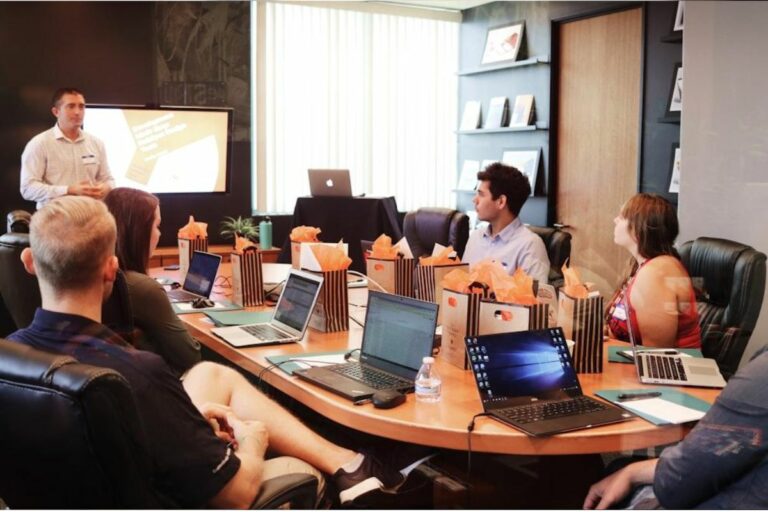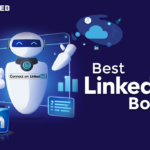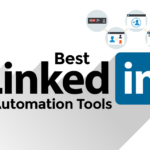Are you struggling to come up with ideas for what to post on LinkedIn?
With over 774 million users, LinkedIn is a powerful platform for connecting with potential employers, customers, and colleagues in your field.
But with so many people vying for attention, it can be difficult to stand out.
That’s why it’s important to craft well-crafted LinkedIn posts that help you differentiate yourself or your brand and build relationships that drive career success.
One effective strategy for LinkedIn posts is to share something that inspires you.
This could be a quote, a book, or a podcast that you found particularly motivating.
Sharing your sources of inspiration can help you connect with others who share your interests and values.
Another idea is to share a success story from one of your clients or customers.
This not only showcases the benefits of your product or service but also builds trust with your audience.
Personal stories are also a great way to engage your audience on LinkedIn.
People enjoy stories, and it helps them get to know you on a more personal level.
You could share a story about a challenge you overcame or a lesson you learned.
The key is to make it relevant to your audience and tie it back to your professional goals.
With these ideas and more, you’ll be able to create compelling LinkedIn posts that help you stand out in the crowd.
Post Contents
- 1 Understanding Your Audience
- 2 What to Post on LinkedIn
- 3 Creating a Content Strategy
- 4 Boosting Post Visibility
- 5 Understanding LinkedIn’s Algorithm
- 6 Building Your Personal and Professional Brand
- 7 Leveraging Expert Opinions and Insights
- 8 Utilizing LinkedIn for Business and Hiring
- 9 Engaging with Your LinkedIn Community
- 10 Examples of Successful LinkedIn Posts
- 11 Key Takeaways
Understanding Your Audience
To create engaging and relevant content on LinkedIn, it’s essential to understand your audience.
By doing so, you can tailor your posts to meet their needs and interests.
Here are some tips to help you understand your audience better:
Demographics
LinkedIn provides valuable tools to help you understand your target audience better.
One of the most important is the analytics feature, which provides insights into the demographics of your followers.
You can see their age, gender, location, job title, and industry.
This information can help you create content that resonates with your audience.
Interests
To create content that your audience finds interesting, you need to know what they care about.
You can use LinkedIn’s search feature to find groups related to your industry or topic.
Join these groups and observe the conversations that are happening.
What are people talking about? What questions are they asking?
Use this information to create content that addresses these topics and questions.
Pain Points
Understanding your audience’s pain points is crucial to creating content that resonates with them.
What challenges do they face in their professional lives?
What problems are they trying to solve?
You can use LinkedIn’s search feature to find posts related to your industry or topic.
Look for posts where people are expressing frustration or asking for help.
Use this information to create content that addresses these pain points.
Trends
Keeping up with industry trends is essential to creating relevant content.
What are the latest developments in your industry?
What new technologies or strategies are emerging?
You can use LinkedIn’s search feature to find posts related to your industry or topic.
Look for posts that are getting a lot of engagement.
These posts can give you insights into the topics and trends that are currently popular.
Feedback
Finally, don’t forget to ask for feedback from your audience.
Use LinkedIn’s polling feature to ask your followers what type of content they would like to see more of.
You can also ask for feedback in the comments section of your posts.
Use this feedback to improve your content and create posts that your audience finds valuable.
By using these tips, you can gain a deeper understanding of your audience and create content that resonates with them.
Remember to keep your content professional and relevant to your industry or topic.
What to Post on LinkedIn
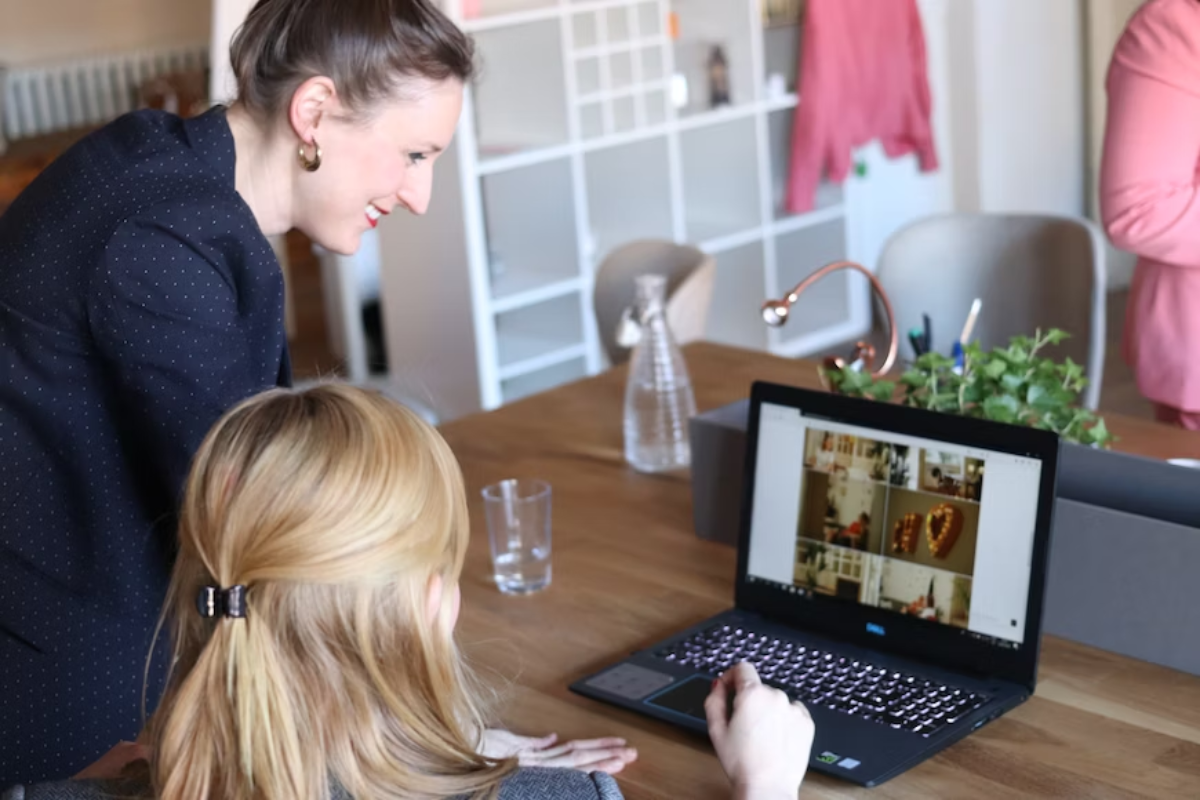
If you’re wondering what to post on LinkedIn, you’re not alone.
LinkedIn is a powerful platform for professionals to connect and engage with each other, and it’s important to make sure your content is relevant and valuable to your audience.
Here are some ideas for what to post on LinkedIn:
Text Posts
Text posts are a great way to share your thoughts and ideas with your network.
You can share a personal story, ask a thought-provoking question, or share a tip or piece of advice related to your industry.
Be sure to keep your posts concise and easy to read, and use formatting like bullet points or bold text to make your post stand out.
Video Posts
Video is a highly engaging format that can help you connect with your audience on a deeper level.
You can create a video introducing yourself or your product, share a customer success story, or give a behind-the-scenes look at your company.
Be sure to keep your videos short and to the point, and use captions or subtitles to make them accessible to all viewers.
Image Posts
Images can help your posts stand out and grab your audience’s attention.
You can share photos of your team or your product, or create graphics that illustrate a key point or statistic.
Be sure to use high-quality images that are relevant to your post, and include a caption that explains what the image is about.
Polls and Questions
Polls and questions are a great way to engage your audience and get their feedback on a particular topic.
You can ask a question related to your industry, or create a poll to gather opinions on a particular issue.
Be sure to follow up with your audience and share the results of the poll or question.
News and Current Trends
Sharing news and current trends related to your industry can help position you as a thought leader and keep your audience informed.
You can share articles or blog posts from reputable sources, or create your own content that discusses current events or trends.
Blog Posts and Articles
If you have a blog or write articles related to your industry, LinkedIn is a great place to share them.
Be sure to include a brief summary of the article in your post, and encourage your audience to read the full article on your website.
Event Announcements
If you’re hosting an event or attending a conference related to your industry, LinkedIn is a great place to share the details.
Be sure to include the date, time, and location of the event, as well as any relevant information about what attendees can expect.
Company Updates
Sharing updates about your company can help keep your audience informed and engaged.
You can share news about new products or services, company milestones, or changes to your team or leadership.
Job Postings
If you’re hiring for a position at your company, LinkedIn is a great place to share the job posting.
Be sure to include a brief summary of the position and what qualifications you’re looking for, as well as a link to the full job posting.
User-Generated Content
Sharing content created by your customers or followers can help build trust and credibility with your audience.
You can share photos or videos of customers using your product, or share testimonials or reviews from satisfied customers.
Case Studies
Case studies are a powerful way to showcase the benefits of your product or service.
You can share a case study that highlights how your product or service helped a particular customer or solved a particular problem.
Webinars
Hosting a webinar related to your industry can help position you as a thought leader and provide value to your audience.
Be sure to include the date and time of the webinar, as well as a brief summary of what attendees can expect.
Infographics
Infographics are a great way to share complex information in an easy-to-understand format.
You can create an infographic that illustrates a key concept or statistic related to your industry.
Newsletters
If you have a newsletter related to your industry, LinkedIn is a great place to share it.
Be sure to include a brief summary of what’s included in the newsletter, as well as a link to sign up to receive it.
In conclusion, there are many different types of content you can post on LinkedIn to engage your audience and build your brand.
Experiment with different formats and see what resonates with your audience.
Remember to keep your posts relevant and valuable, and always aim to provide value to your audience.
Creating a Content Strategy

When it comes to posting on LinkedIn, creating a content strategy is key to success.
Without a clear plan in place, you risk posting content that doesn’t resonate with your audience, doesn’t drive engagement, and doesn’t provide value.
To create a content strategy that works for you, start by thinking about your goals.
What do you want to achieve with your LinkedIn presence?
Are you looking to build relationships with potential clients?
Establish yourself as a thought leader in your industry?
Drive traffic to your website?
Once you’ve outlined your goals, it’s time to start thinking about the type of content you want to share.
This can include a mix of organic and curated content, such as industry news, thought-provoking articles, and helpful tips and insights.
When it comes to topics, try to focus on what’s current and relevant in your industry.
Look for trends and data that you can share with your audience, and consider sharing your own unique insights and perspectives.
To drive engagement with your content, it’s important to provide value to your audience.
This can include sharing helpful tips and advice, providing in-depth analysis of industry trends, or simply sharing your own experiences and perspectives.
Finally, remember that building relationships is key to growth on LinkedIn.
Take the time to engage with your audience, respond to comments and messages, and build connections with others in your industry.
By doing so, you’ll be well on your way to creating a successful LinkedIn content strategy.
Boosting Post Visibility
If you want to increase the reach of your LinkedIn posts, you can use the Boost feature.
This is a paid campaign that allows your post to be seen by more people.
Here are some tips to optimize your Boost campaign.
Using Tags and Hashtags
Tags and hashtags can help your post get discovered by people who are interested in the same topic.
Use relevant tags and hashtags in your post to increase visibility.
You can also search for popular hashtags related to your industry and use them in your post.
Including Links
LinkedIn doesn’t like it when you use external links in your post.
However, you can include links in the comments section of your post.
You can also use the Boost feature to promote your LinkedIn article or company page, which can include links.
Reposting Content
If you have an old post that performed well, you can repost it to increase visibility.
You can also repost someone else’s content if it’s relevant to your audience.
Just make sure you give credit to the original author.
Overall, the Boost feature can help you increase your post’s visibility and reach.
Use relevant tags and hashtags, include links in the comments section, and repost content to optimize your Boost campaign.
Understanding LinkedIn’s Algorithm
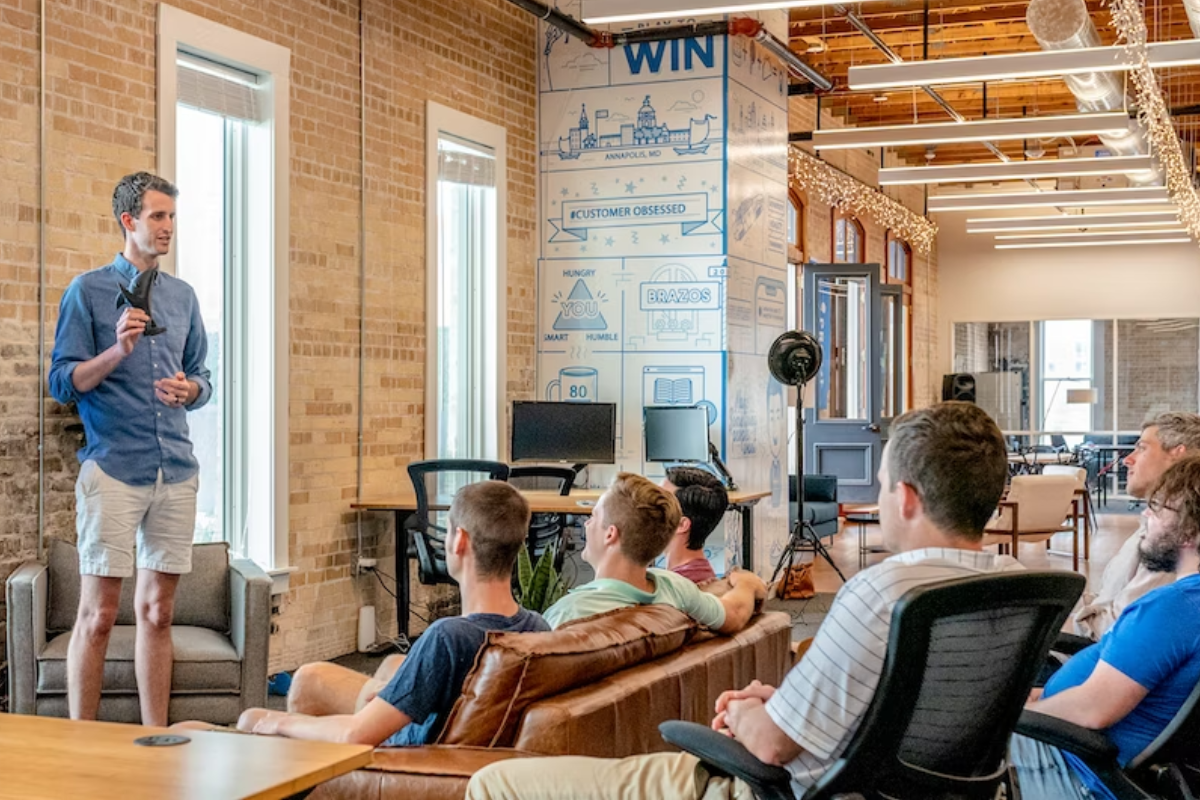
When it comes to posting on LinkedIn, understanding the platform’s algorithm is crucial to ensure your content reaches your target audience.
LinkedIn’s algorithm measures a range of factors to determine how relevant any given post might be to your audience.
It sorts your content into one of three categories: spam, low-quality, or high-quality.
Here’s how LinkedIn determines where your post belongs:
- Spam: If your post is identified as spam, it will not be shown to anyone except you. LinkedIn’s algorithm identifies spam based on a range of factors, including the use of excessive hashtags, too many links, or repetitive content.
- Low-quality: If your post is identified as low-quality, it will be shown to a limited number of people. LinkedIn’s algorithm identifies low-quality content based on factors such as poor engagement rates, low-quality images, or low-quality text.
- High-quality: If your post is identified as high-quality, it will be shown to a larger number of people. LinkedIn’s algorithm identifies high-quality content based on factors such as high engagement rates, high-quality images, or high-quality text.
To ensure your content is identified as high-quality, here are a few tips to keep in mind:
- Share knowledge and advice: LinkedIn’s new algorithm prioritizes posts that share knowledge and advice. When creating your content, think about how you can provide value to your audience. Share your expertise and insights to position yourself as a thought leader in your industry.
- Encourage meaningful comments: LinkedIn’s algorithm rewards posts that receive meaningful comments. When posting, encourage your audience to share their thoughts and opinions in the comments section. Respond to comments to keep the conversation going and show LinkedIn’s algorithm that your post is valuable.
- Consider your audience: When creating content, consider your target audience. What are their pain points? What information are they looking for? Use this information to create content that is relevant and valuable to your audience.
By understanding LinkedIn’s algorithm and following these tips, you can create content that is more likely to be identified as high-quality and reach a larger audience on the platform.
Building Your Personal and Professional Brand
Building a strong personal and professional brand on LinkedIn is essential for establishing yourself as a thought leader in your industry.
It can help you gain visibility, attract new clients or customers, and even land your dream job.
Here are some ways to build your personal and professional brand on LinkedIn.
Sharing Personal Stories
Sharing personal stories is a great way to showcase your personality and connect with your audience on a deeper level.
You can share your personal experiences, challenges, and achievements that have shaped who you are today.
By sharing your personal stories, you can inspire others and show them that you are more than just a professional.
Showcasing Company Culture
Showcasing your company culture is another way to build your personal and professional brand.
You can share photos and videos of your team working together, participating in team-building activities, or celebrating company milestones.
By showcasing your company culture, you can attract like-minded individuals who share your values and vision.
Highlighting Team and Colleagues
Highlighting your team and colleagues is also important for building your personal and professional brand.
You can share their achievements, projects, and contributions to your company.
By highlighting your team and colleagues, you can show that you are a team player and value collaboration.
In conclusion, building your personal and professional brand on LinkedIn is crucial for establishing yourself as a thought leader in your industry.
By sharing personal stories, showcasing your company culture, and highlighting your team and colleagues, you can attract new clients or customers, land your dream job, and inspire others.
Leveraging Expert Opinions and Insights

One effective way to create engaging content on LinkedIn is to leverage the opinions and insights of experts in your industry.
By sharing their perspectives, you can establish yourself as a thought leader and provide valuable insights to your audience.
Here are a few tips on how to effectively leverage expert opinions and insights on LinkedIn:
1. Identify Thought Leaders in Your Industry
To start, you need to identify the thought leaders in your industry.
These are the individuals who are respected and admired for their knowledge and expertise.
You can find them by searching for relevant hashtags, following industry publications, and joining LinkedIn groups.
2. Share Their Opinions
Once you have identified the thought leaders in your industry, you can start sharing their opinions.
This can be done by sharing their posts, commenting on their content, or even interviewing them for your own content.
By doing so, you are providing your audience with valuable insights and establishing yourself as a trusted source of information.
3. Provide Your Own Commentary
While it’s important to share the opinions of experts, it’s also important to provide your own commentary.
This can be done by adding your own thoughts and insights to their posts or by writing your own articles that expand on their ideas.
By doing so, you are demonstrating your own expertise and providing your audience with a unique perspective on the topic.
4. Use Thought Leadership to Build Your Brand
Finally, leveraging expert opinions and insights can be an effective way to build your own brand as a thought leader.
By consistently providing valuable insights and commentary, you can establish yourself as a trusted source of information and build a following of engaged and loyal followers.
In summary, leveraging expert opinions and insights is a powerful way to create engaging content on LinkedIn.
By identifying thought leaders in your industry, sharing their opinions, providing your own commentary, and using thought leadership to build your brand, you can establish yourself as a trusted source of information and provide valuable insights to your audience.
Utilizing LinkedIn for Business and Hiring
LinkedIn is a powerful tool for businesses and professionals looking to connect and network with others in their industry.
With more than 700 million members worldwide, LinkedIn provides a platform for businesses to share their brand, products, and services with a global audience.
One of the most useful features of LinkedIn for businesses is the ability to create a company page.
This page allows you to showcase your business to potential customers, partners, and employees.
By including key information such as your industry, company size, and website URL, you can help others understand what your business does and how it can benefit them.
In addition to promoting your business, LinkedIn is also a great platform for hiring and recruiting top talent.
With more than 30 million companies using LinkedIn for business, it’s no surprise that many businesses also use the platform to find new employees.
By posting job openings on your company page or using the #Hiring hashtag, you can reach a large pool of qualified candidates and find the right fit for your team.
When using LinkedIn for hiring, it’s important to keep in mind that the platform is not just for posting job openings.
You can also use it to connect with potential candidates, build relationships, and learn more about their skills and experience.
By engaging with professionals in your industry and sharing valuable content, you can establish yourself as a thought leader and attract top talent to your business.
Overall, LinkedIn is a valuable tool for businesses looking to connect with other professionals, promote their brand, and find top talent.
By utilizing the platform effectively and engaging with others in your industry, you can take your business to the next level and achieve your goals.
Engaging with Your LinkedIn Community
Engaging with your LinkedIn community is essential to building trust and establishing yourself as a thought leader in your industry.
By actively participating in conversations and responding to comments, you can create a loyal following of clients and industry peers.
Here are some tips for engaging with your LinkedIn community:
- Respond to comments: When someone takes the time to comment on your post, make sure to respond in a timely manner. This shows that you value their input and are interested in continuing the conversation.
- Ask questions: Encourage engagement by asking questions in your posts. This can spark conversation and help you learn more about your audience’s needs and interests.
- Share valuable content: Share articles, blog posts, and other content that you think your audience will find valuable. This shows that you are invested in providing a service to your community beyond just promoting your own business.
- Be authentic: Don’t be afraid to show your personality and be yourself in your posts. This can help you build trust with your audience and create a more personal connection.
By following these tips, you can create a vibrant and engaged community on LinkedIn that will help you grow your business and establish yourself as a leader in your industry.
Examples of Successful LinkedIn Posts
When it comes to posting on LinkedIn, it can be helpful to see what type of content performs well on the platform.
Here are a few examples of high-quality LinkedIn posts that have garnered engagement and attention:
- Personal stories: Sharing a personal story can be a great way to connect with your audience on a more emotional level. For example, you could share a story about how you overcame a challenge in your career or a lesson you learned from a mentor. People love stories, and it can help them get to know you better.
- Industry insights: Sharing your expertise in your industry can help establish you as a thought leader and provide value to your network. You could share a recent study or research finding related to your industry, or provide your own insights based on your experience.
- Company updates: If you’re posting on behalf of your company, sharing updates about new products or services, company culture, or industry news can be a great way to keep your followers informed and engaged.
- Visual content: Including images, videos, or infographics in your posts can help them stand out in the LinkedIn feed and grab people’s attention. Just make sure the visuals are high-quality and relevant to your post topic.
- Engaging questions: Asking thought-provoking questions can encourage your network to engage with your post and share their own insights. For example, you could ask for opinions on a current industry trend or for advice on a particular challenge you’re facing.
Remember, the key to a successful LinkedIn post is to provide value to your audience.
Whether it’s through sharing your expertise, providing insights, or simply entertaining them with a personal story, make sure your post is relevant and engaging.
Key Takeaways
When it comes to posting on LinkedIn, there are a few key takeaways to keep in mind.
These tips can help you create content that resonates with your audience and drives engagement.
Be Authentic
One of the most important things to remember when posting on LinkedIn is to be authentic.
Share personal stories or lessons learned that offer valuable insights or inspiration to your audience.
People want to connect with real people, so don’t be afraid to show your personality and share your experiences.
Share Relevant Stats
Sharing relevant industry stats, surveys, case studies, research, and data can help bring your posts to life.
Be sure to keep all stats, facts, and figures relevant to your brand.
This can help establish you as a thought leader in your industry and give your audience valuable information they can use.
Consistency is Key
Posting regularly on LinkedIn is key to success.
Consistency helps push your content to wider audiences and demographics.
However, if you post regularly, make sure your content is high-quality and engaging.
Don’t sacrifice quality for quantity.
Engage with Your Audience
Engaging with your audience is crucial on LinkedIn.
Respond to comments and messages, and ask questions to encourage conversation.
This can help build relationships with your audience and establish you as a trusted source of information.
Use Visuals
Visuals can help your posts stand out on LinkedIn.
Use images, videos, and infographics to make your content more engaging and shareable.
Just make sure your visuals are relevant to your post and add value to your message.
By following these key takeaways, you can create content that resonates with your audience and drives engagement on LinkedIn.
Remember to be authentic, share relevant stats, post consistently, engage with your audience, and use visuals to make your content stand out.


